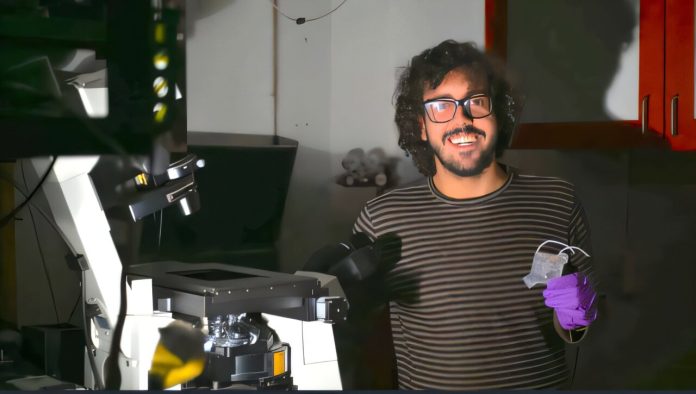
A team of physicists at McGill University has developed a new device that allows them to trap, release, and manipulate DNA molecules without ever touching them.
Using finely tuned electric fields, the device gives scientists unprecedented real-time control over DNA’s behavior, opening new possibilities for faster diagnostics, improved genome mapping, and deeper insights into disease-related molecules.
The breakthrough was led by doctoral student Matheus Azevedo Silva Pessôa, a researcher in nanofluids, working in Professor Walter Reisner’s Nanobiophysics lab.
The work also involved collaborators from Professor Sara Mahshid’s Bioengineering lab at McGill, startup Dimension Genomics, and the University of California, Santa Barbara.
Their findings were recently published in Science Advances under the title “Single-molecule capture, release, and dynamical manipulation via reversible electrokinetic confinement (RECON).”
DNA molecules naturally carry an electric charge, which the researchers realized could be harnessed to manipulate them more precisely than traditional methods allow.
Until now, scientists often had to mechanically trap DNA, confining molecules in tiny grooves and pressing them into place with a plate or lid.
This approach risked breaking the delicate molecules and offered very limited control over their movements.
The new device replaces mechanical force with carefully tuned electrical signals. Pessôa explained that it works like adjusting the dial of an AM radio, where the voltage is fine-tuned to just the right frequency to guide DNA into a tiny well.
This process gently traps the molecules without damaging them and allows researchers to hold them as long as needed.
Equally important, the device can release DNA on demand. By adjusting the strength of the electric field, scientists can watch DNA move freely, observing its natural dynamics in real time.
This level of control means researchers can not only study the structure and movement of DNA but also simulate cellular environments and trigger processes such as the opening of liposomes—small, fat-based carriers used in drug delivery.
“Now we can confine DNA for as long as we want, observe its behavior, and change conditions in real time without breaking it,” Pessôa said.
The ability to capture and manipulate single molecules of DNA could significantly accelerate research in genomics and molecular medicine. For example, it could help scientists analyze genetic material more quickly and precisely for diagnostic purposes, or better understand how DNA interacts with other molecules involved in disease.
The team has already filed a provisional patent for the technology through Dimension Genomics, signaling its potential for real-world applications in medical research and biotechnology.
By turning DNA’s natural charge into a tool for precise manipulation, the McGill team has opened the door to a powerful new way of studying life’s most fundamental molecule—without breaking it apart in the process.



